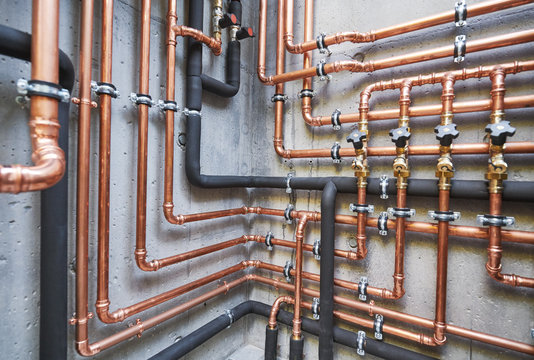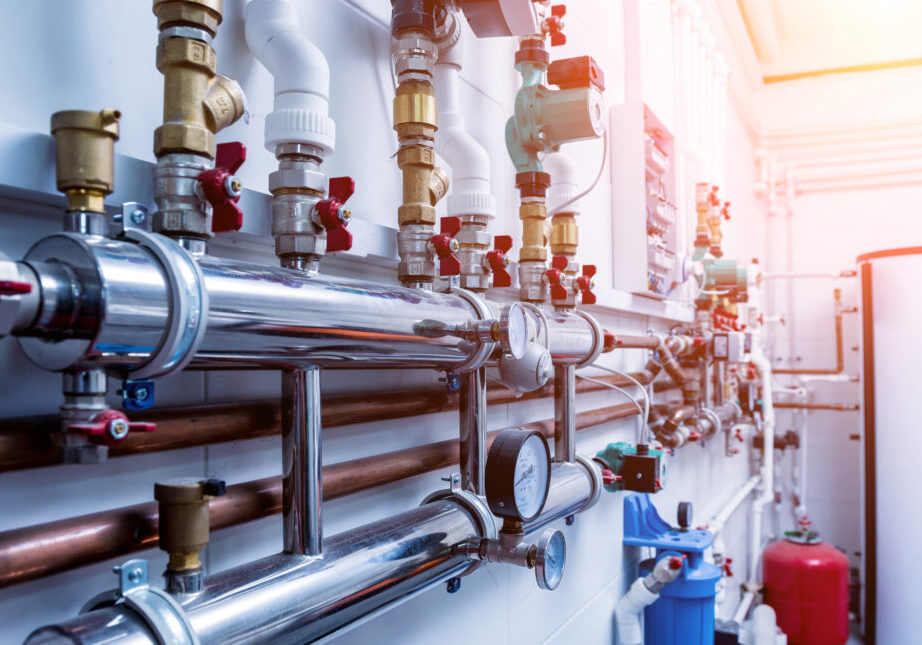A Comprehensive Guide to Your House's Plumbing System Anatomy
A Comprehensive Guide to Your House's Plumbing System Anatomy
Blog Article
They are making a number of great points on the subject of Exploring Your Homes Plumbing Anatomy overall in this content which follows.

Understanding just how your home's plumbing system functions is important for every single property owner. From supplying tidy water for alcohol consumption, cooking, and showering to securely getting rid of wastewater, a well-maintained plumbing system is vital for your family members's health and comfort. In this extensive guide, we'll check out the detailed network that makes up your home's pipes and deal pointers on maintenance, upgrades, and dealing with usual issues.
Introduction
Your home's pipes system is greater than just a network of pipes; it's a complicated system that guarantees you have accessibility to tidy water and reliable wastewater removal. Understanding its elements and exactly how they collaborate can aid you prevent expensive repair work and guarantee every little thing runs efficiently.
Standard Elements of a Pipes System
Pipes and Tubing
At the heart of your pipes system are the pipes and tubing that carry water throughout your home. These can be made from different materials such as copper, PVC, or PEX, each with its advantages in regards to sturdiness and cost-effectiveness.
Components: Sinks, Toilets, Showers, and so on.
Components like sinks, commodes, showers, and bath tubs are where water is made use of in your house. Recognizing just how these components attach to the pipes system aids in identifying issues and intending upgrades.
Shutoffs and Shut-off Points
Valves manage the flow of water in your plumbing system. Shut-off shutoffs are vital throughout emergency situations or when you require to make repair services, enabling you to isolate parts of the system without disrupting water flow to the entire house.
Water Supply System
Main Water Line
The primary water line links your home to the local water supply or a private well. It's where water enters your home and is dispersed to numerous fixtures.
Water Meter and Pressure Regulator
The water meter measures your water use, while a stress regulator guarantees that water flows at a secure stress throughout your home's plumbing system, preventing damage to pipes and components.
Cold Water vs. Hot Water Lines
Understanding the difference in between cold water lines, which supply water straight from the major, and warm water lines, which carry heated water from the hot water heater, assists in troubleshooting and preparing for upgrades.
Drain System
Drain Water Lines and Traps
Drain pipes bring wastewater far from sinks, showers, and bathrooms to the drain or septic tank. Catches protect against drain gases from entering your home and also catch debris that could create clogs.
Ventilation Pipelines
Air flow pipes enable air right into the drainage system, stopping suction that could slow drain and create catches to empty. Correct ventilation is crucial for maintaining the stability of your pipes system.
Significance of Appropriate Water Drainage
Ensuring proper drain protects against backups and water damages. Routinely cleaning drains pipes and maintaining traps can protect against costly repair services and expand the life of your pipes system.
Water Heating Unit
Sorts Of Water Heaters
Hot water heater can be tankless or traditional tank-style. Tankless heating units heat water on demand, while storage tanks keep warmed water for instant usage.
Upgrading Your Plumbing System
Factors for Updating
Upgrading to water-efficient fixtures or changing old pipelines can boost water top quality, reduce water costs, and enhance the value of your home.
Modern Plumbing Technologies and Their Benefits
Explore innovations like smart leak detectors, water-saving toilets, and energy-efficient water heaters that can save money and decrease environmental effect.
Cost Considerations and ROI
Compute the ahead of time costs versus long-lasting financial savings when taking into consideration pipes upgrades. Several upgrades spend for themselves via lowered energy costs and less repair services.
Just How Water Heaters Link to the Pipes System
Recognizing just how hot water heater attach to both the cold water supply and warm water circulation lines assists in identifying problems like not enough warm water or leakages.
Upkeep Tips for Water Heaters
Routinely purging your hot water heater to remove sediment, inspecting the temperature setups, and evaluating for leakages can expand its lifespan and improve energy efficiency.
Common Plumbing Problems
Leaks and Their Causes
Leakages can take place as a result of aging pipes, loosened installations, or high water pressure. Addressing leaks immediately avoids water damages and mold growth.
Blockages and Clogs
Obstructions in drains and toilets are frequently triggered by flushing non-flushable products or an accumulation of oil and hair. Using drain screens and being mindful of what goes down your drains can stop obstructions.
Indicators of Pipes Troubles to Watch For
Low water pressure, slow-moving drains, foul odors, or unusually high water expenses are indicators of possible pipes problems that should be attended to promptly.
Plumbing Maintenance Tips
Routine Examinations and Checks
Schedule annual plumbing assessments to capture problems early. Seek signs of leaks, rust, or mineral build-up in faucets and showerheads.
Do It Yourself Upkeep Tasks
Simple tasks like cleaning tap aerators, looking for commode leakages making use of color tablets, or insulating revealed pipelines in cool environments can prevent major pipes concerns.
When to Call an Expert Plumber
Know when a plumbing problem calls for expert know-how. Attempting complicated repair services without correct understanding can cause even more damage and higher repair service prices.
Tips for Decreasing Water Use
Simple habits like repairing leakages without delay, taking shorter showers, and running full tons of washing and recipes can save water and reduced your energy costs.
Eco-Friendly Pipes Options
Consider sustainable plumbing materials like bamboo for flooring, which is durable and environmentally friendly, or recycled glass for counter tops.
Emergency situation Readiness
Steps to Take During a Plumbing Emergency
Know where your shut-off valves lie and exactly how to shut off the water in case of a ruptured pipeline or significant leakage.
Importance of Having Emergency Situation Contacts Handy
Maintain call info for regional plumbing technicians or emergency situation solutions easily available for quick response throughout a pipes situation.
Environmental Impact and Conservation
Water-Saving Fixtures and Devices
Setting up low-flow faucets, showerheads, and bathrooms can significantly reduce water usage without sacrificing performance.
DIY Emergency Fixes (When Suitable).
Momentary repairs like utilizing air duct tape to patch a leaking pipe or positioning a container under a dripping faucet can minimize damages till a specialist plumbing professional shows up.
Verdict.
Recognizing the composition of your home's pipes system equips you to preserve it efficiently, saving money and time on repair services. By complying with regular maintenance routines and staying notified regarding modern pipes innovations, you can ensure your pipes system operates efficiently for several years to find.
HOW YOUR PLUMBING SYSTEM WORKS
Which Pipes Do What?
Blue lines = fresh water supply entering the building Red lines = hot water supply entering the building Grey lines = pipes carrying waste away from the building and venting pipes carrying gases away from the building (through the roof) YOUR MAIN PLUMBING SYSTEMS
There are two main plumbing systems that support your home s basic plumbing needs one that brings clean water into your home, and one that sends dirty water away from your home. Connected to the toilet, bath, shower, and other faucets in your home, these two systems keep your water flowing in the right directions.
ACCESSING FRESH WATER
Fresh and clean water is brought into your home through the main water supply line . Filtered through one pipe, this water is pressured to flow into the various fixtures in your home at any given time.
This water can be sourced from a well located on your property, a pond or river (mostly cottages), or, as in most cases, from the city s municipal water treatment centre. However, it is important to note that water that is untreated, such as the water siphoned from ponds or rivers, may not be safe to drink. Personal water supplies always need to be treated for hardness and contaminants before consumed.
MUNICIPAL WATER SUPPLIES
Improve taste and odour Remove sediment Eliminate hardness Reduce chlorine COLD WATER SUPPLY VS. HOT WATER SUPPLY
Cold water flows into your home or building through the service line, which then distributes hot or cold water to your fixtures. This line is most commonly run through a central column that runs floor to floor. Hot water runs in short and straight pipes as the longer the pipeline, the more heat that will be lost in the transfer. Having shorter pipes also allows residents to access hot water more quickly.
WASTE WATER SYSTEM
Your wastewater system is divided into two parts pipes that send wastewater away from your home and venting pipes that send sewer gas away from your home. Sewage water travels through pipes that flush the water and waste towards local sewers that are operated and managed by your city or town. Most sewer systems rely on gravity to move the wastewater to where it needs to go.
The further away from your toilet or sink, the larger wastewater pipes become. This allows for waste to be disposed of from various parts of your home or business at once without pipe blockages. The angle and flow of these pipes are also essential for keeping your waste pipes clear of build up.
https://harrisplumbing.ca/how-your-home-plumbing-system-works/

I stumbled upon that blog posting on Exploring Your Homes Plumbing Anatomy while doing a lookup on the web. Sharing is caring. Helping people is fun. Thank you for your time spent reading it.
Automated Marketing Report this page